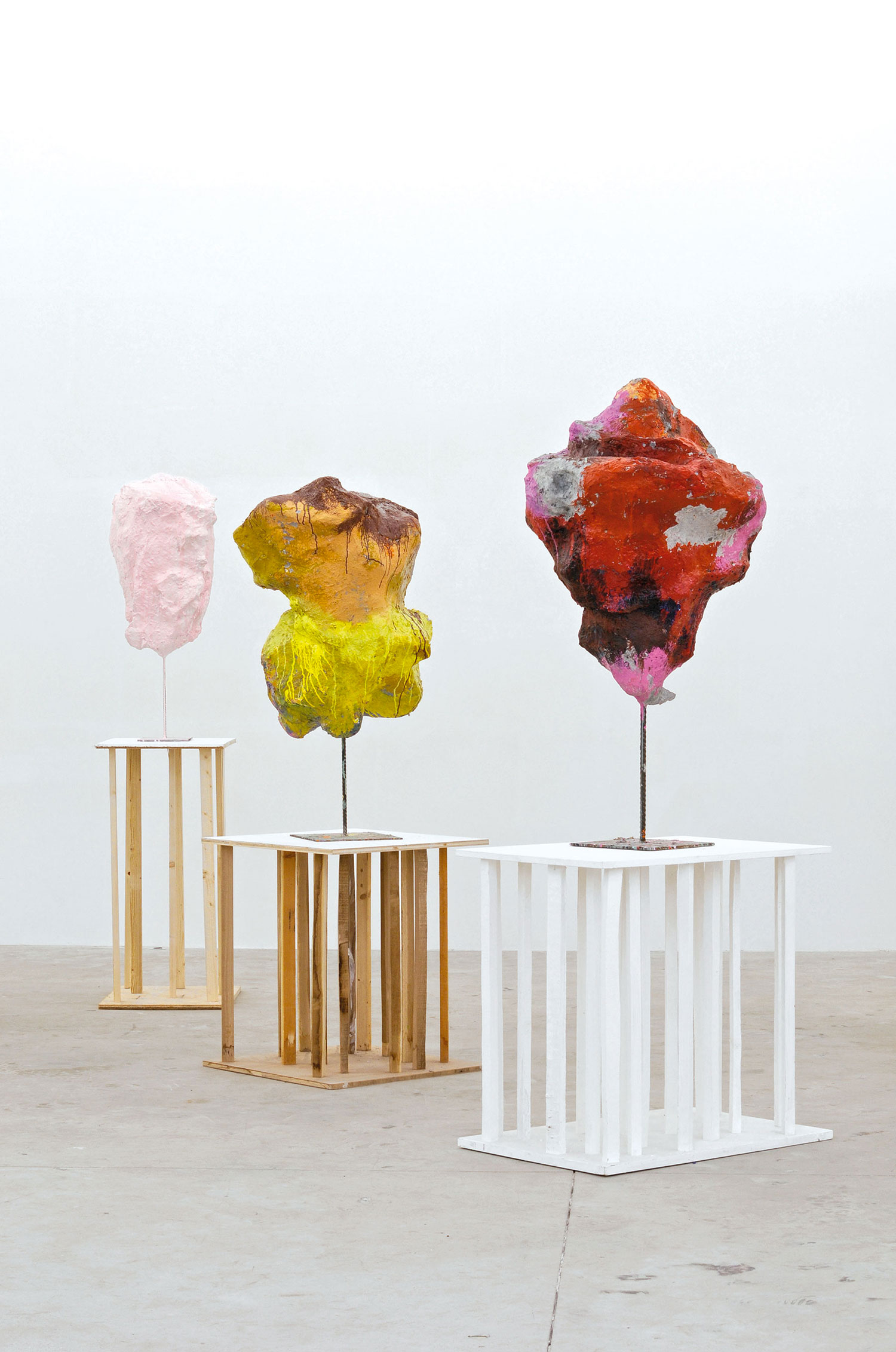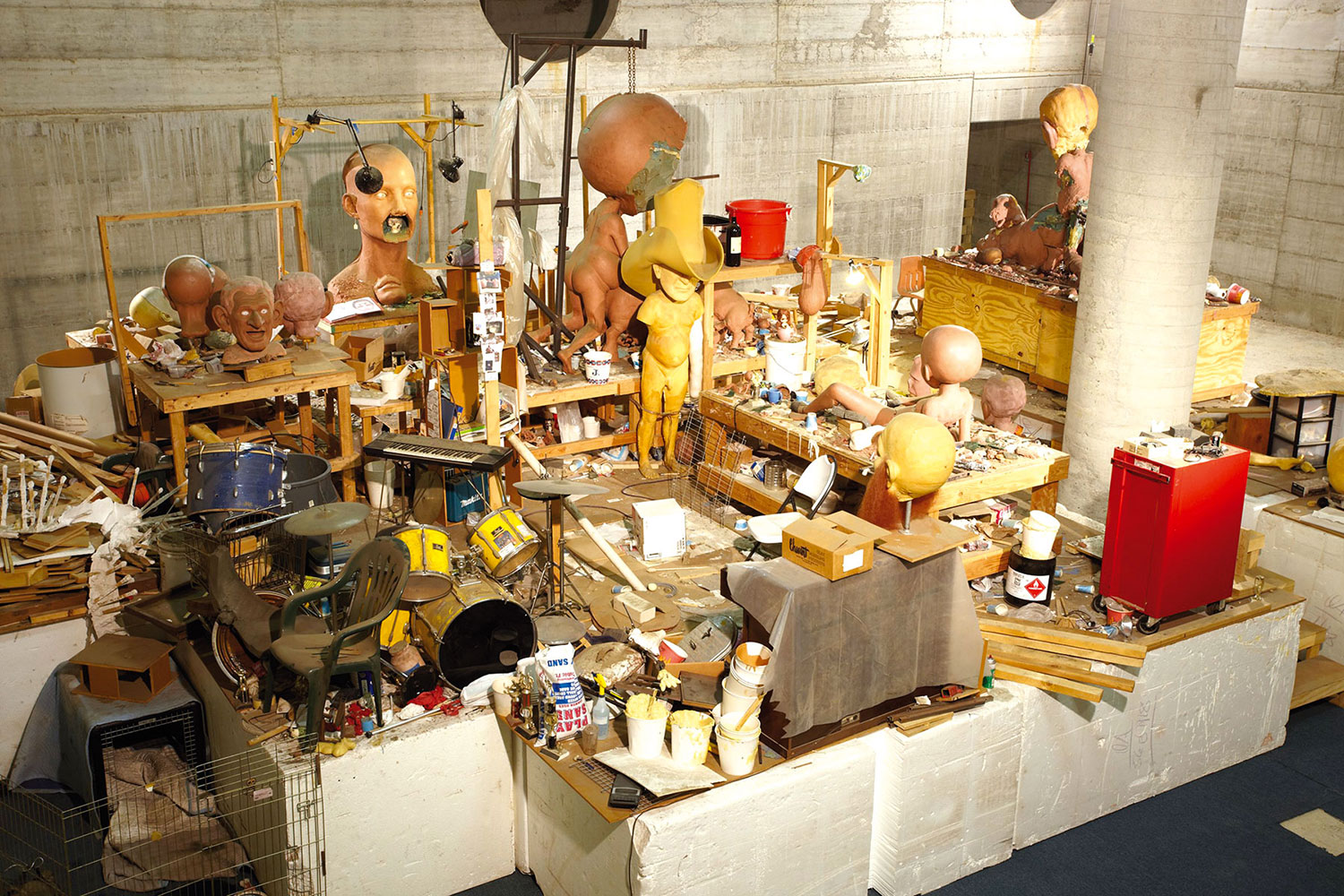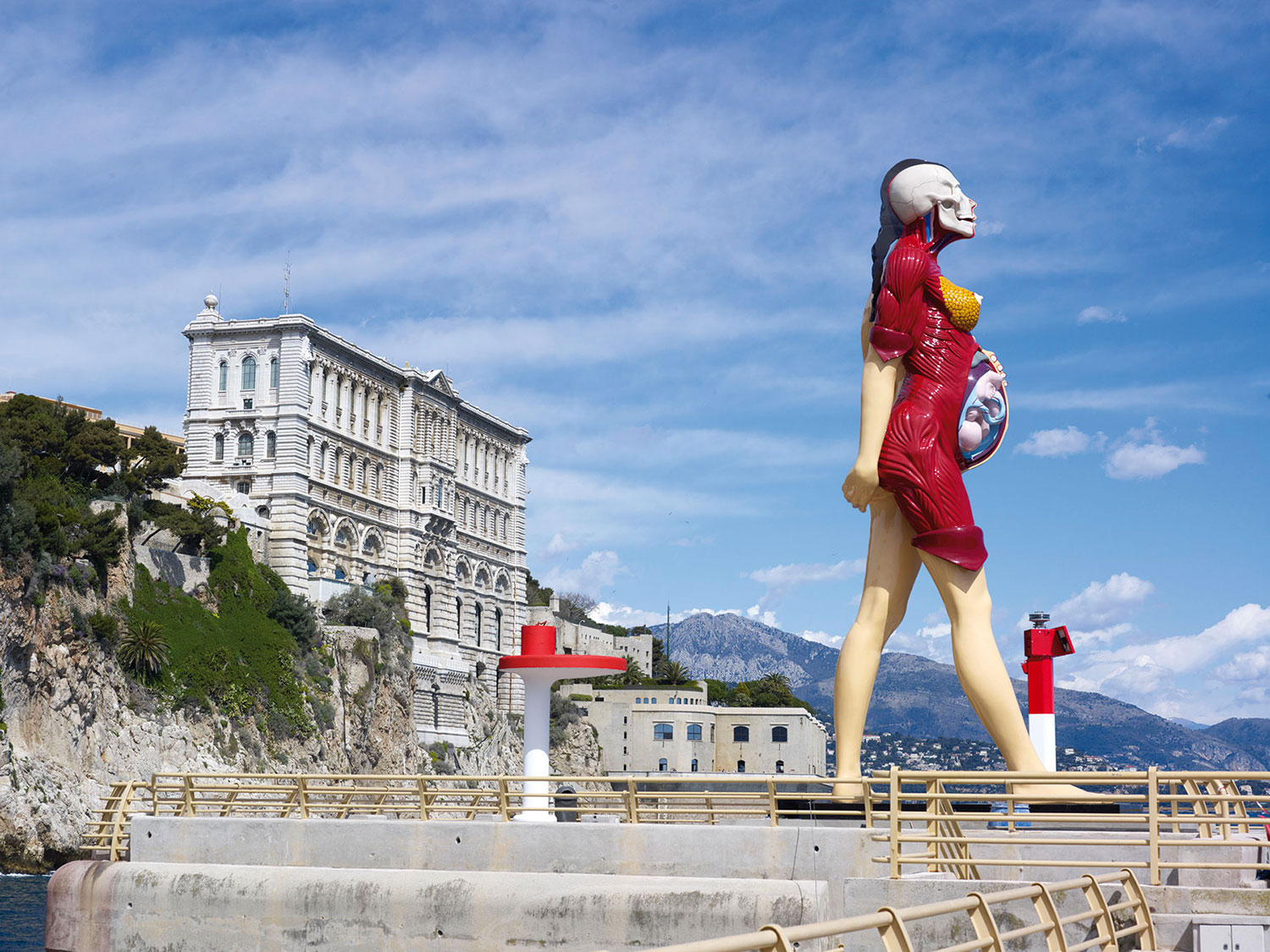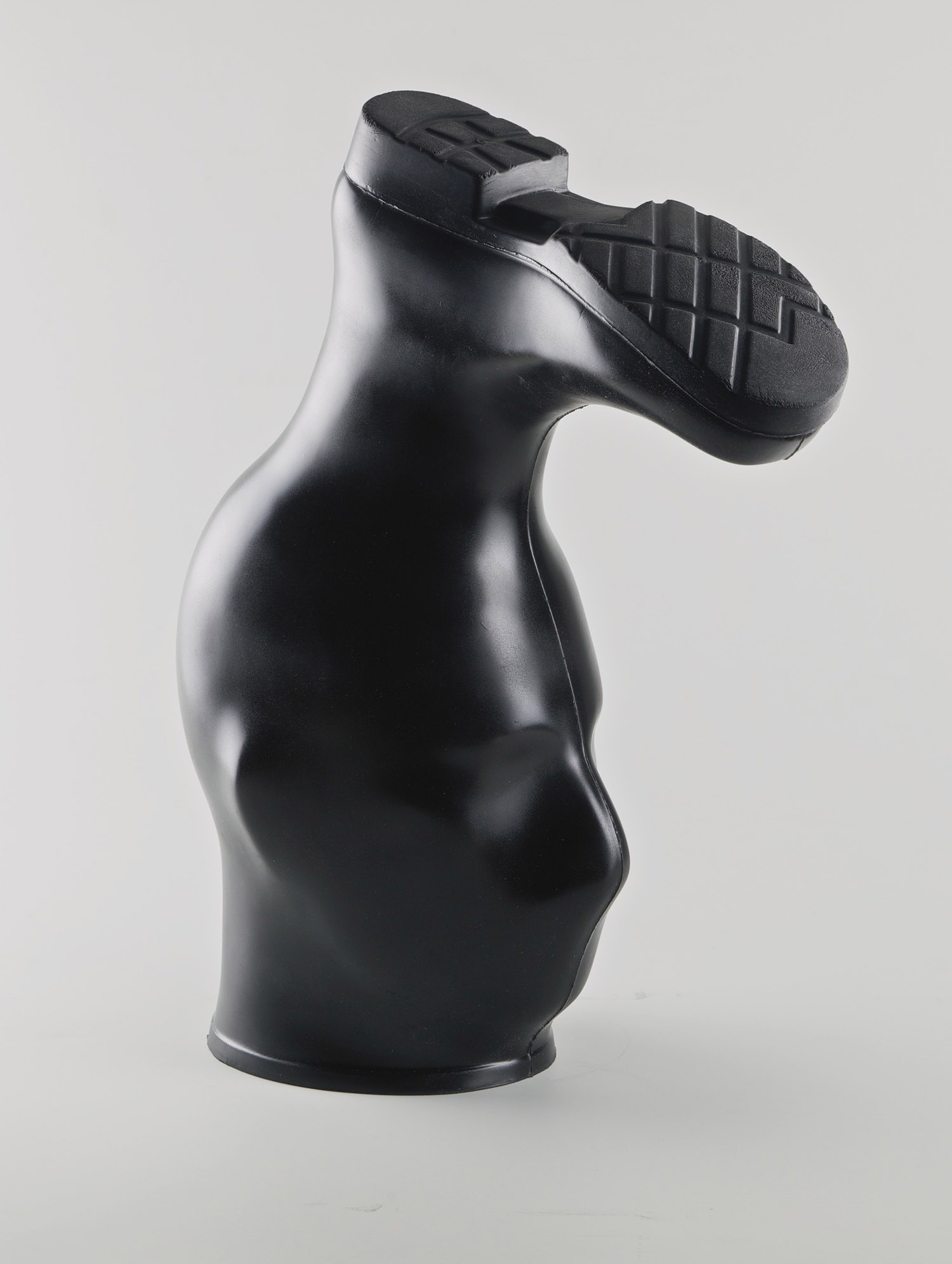
On my way to Rachel Harrison’s Brooklyn studio, I had one thing that I was going to bug her about: clowns. Two groups of clowns in particular: the hedonistic clowns of ’70s hard-rock, KISS, and the Gacy-inspired abject nü-metallers, Slipknot. Having both made appearances in Harrison’s work as often as some 20th-century artists like Andy Warhol and Frank Stella — artists who appear in name only or in Lawler-esque photographic fragments — I figured it might be a way to explore the cultural references that circulate on the other side of the gallery’s walls. One of Harrison’s most important contributions to the cultural dialogue surrounding contemporary art in the roughly 20 years that she has exhibited is her non-hierarchical use of cultural idioms. These idioms, one side of the coin, inform art’s existence as a gallery-based, museological experience but, on the other — cheaper — side of the same coin, idioms that inform the aesthetic experiences attached to America’s far more psychologically dominant commercial culture. Yet as these aesthetic opposites are presented with neither one above the other, Harrison lays bare the inapparent correspondence that communes between these estranged cultural forms — one is just as likely to find a clown in a museum as you might a masterpiece in a carnival, so to speak.
After talking with Harrison at length about America’s clown industry — both KISS and Slipknot have mobilized armies of consumers to purchase their floods of merchandise — it becomes clear that many of the initial influences lumped onto her work, who unfailingly range from Robert Rauschenberg and Andy Warhol to Franz West and Martin Kippenberger, don’t quite provide a complete map for navigating the complex emotional responses embedded throughout Harrison’s materially and semiotically intricate referential networks. Which is not to say there is no rapport between Harrison and these canonical artists, as there remains a considerable one. Limiting Harrison’s practice to an exclusively museological interpretation often obscures the cross-cultural and anthropological examinations core to Harrison’s novel approach. While her work’s irreverent appearance easily fits into the global(-ized) dialogue governing sculpture’s current “unmonumentality,” her work also acts as a communicative relay to the cringe-worthy mass aesthetics whose refined exclusion stipulates contemporary art is not to be ignored.
This is, no doubt, the reason why when I queried Harrison for her primary influences, none of the previously mentioned artists immediately entered the discussion. Rather, it was an unexpected collection of conceptual, performance and video artists: Adrian Piper, Yvonne Rainer, Chris Burden, Mike Kelley, Paul McCarthy, to name a few. And after talking clowns for an hour, it was only a matter of time before Bruce Nauman’s video installation Clown Torture (1987) entered the discussion. With its documentation of six ‘entertainers’ enduring not only a torturous gauntlet of repeated tasks outlined by Nauman but also the scrutiny of the viewer’s mediated gaze, one must wonder if they have found an art historical shortcut to accessing the complicated network of references, puns and associations of Harrison’s artistic aggregates. The parallels between Nauman’s violently interrogated clowns and the oft-idealized museological art object scrutinized by Harrison are undeniable: they are both here for our enjoyment, whether they like it or not.

Another entertainer scrutinized by their viewing public that Harrison surprisingly mentioned during our conversation was Karen Carpenter. Specifically the Barbie doll who ‘played’ Karen Carpenter in Todd Haynes’s controversial first film, Superstar: The Karen Carpenter Story (1987). The film is infamous for having depicted the tragic life of the squeaky-clean pop singer entirely with Barbie dolls in place of human actors. When discussing her favorite aspects of Superstar, Harrison emphasized that in order to give the doll a greater likeness to the anorexic star, Haynes reportedly had to sand down the Barbie’s arms and legs — limbs whose skinniness is presumed to be readymade.
Even when watching the film, the visual gag of substituting a doll for a human actor, especially in a highly dramatic context fraught with tragedy (yet also devoid of camp melodrama), first elicits giggles. However, the ‘dollness’ of Haynes’s actors quickly fades as the tragedy mounts. By the film’s finale, Karen’s tragedy is doubly amplified by the haunting absence of a living performer. That a slightly maimed consumer good is as adept at triggering an audience’s sympathy certainly reveals much about the profound psychological interaction at work between objects that scream kitsch and the subjects who consume them.
I, for one, never thought of Haynes’s film when considering Harrison’s Barbie-centric work, Untitled (Becky Friend of Barbie) (2001). Well, not a Barbie, rather Barbie’s handicapped ‘friend,’ ‘Becky.’ Untitled (Becky Friend of Barbie), a component of Harrison’s immersive installation Perth Amboy (2001), rests within a labyrinth of upright cardboard sheets and a photographic series of a suburban New Jersey window where the Virgin Mary was believed to have been sighted. Included among three other works, all riffing on the consecrated museological use of pedestals, Becky is one of four different figurines who contemplate a different aesthetic object: a Confucian monk scrutinizes a “Scholar’s Rock” (in this case, one of Harrison’s signature aggregates humorously painted the same color as the scholar’s robe); a family of Dalmatians consider a mangled business envelope as a towering abstract sculpture; an Indian chief studies a humorously small easel painting — Is he pondering the easel’s status within our post-Greenbergian contemporary context? As for the wheelchair-bound Becky, she is grinning into a photograph that Harrison had taken of a film studio’s vastly unpopulated green screen.

With Superstar’s canny object-subject substitutions now in mind, Harrison’s Untitled (Becky Friend of Barbie) appears as an update of Caspar David Friedrich’s romantic masterpiece, Wanderer above the Sea of Fog (1818), for a world whose claims of handicap-accessibility and political correctness seem increasingly titular, a fantasy projected on to the worlds’ manifold surfaces. However, where Friedrich’s famous painting depicted a scenario suffused with the romantic ideal of sublimity, that ambiguous sensation of terror cloaked in exhilaration, Harrison’s 21st-century remake/remodel swaps out the sublime for the sublimated, where trauma cloaks contentment, comedy masks tragedy. Or in Becky’s specific case, the de-sublimated, as this smiling doll appears in gleeful thrall to the digital age’s most prominent aesthetic void, this abstract media surface stripped bare of its projected fantasies.
Harrison’s non-hierachical use of kitsch within the highly governed contexts of contemporary art finds one of its unlikeliest creative precedents in one of her former Wesleyan college professors: the renowned experimental composer and musician Alvin Lucier. Taking John Cage’s non-traditional use of everyday objects as his starting point, Lucier has employed non-musical — and potentially kitschy — objects to realize a number of his innovative compositions. Sometimes alone and in other instances accompanying traditional instrumentation, Lucier’s repertoire of non-musical instrumentation has included ping pong balls, carbon dioxide-filled balloons, an electronic bird, a cooking pan and a teapot, to name a few — objects that certainly wouldn’t be out of place nestled in one of Harrison’s sculptural aggregates. Perhaps Lucier’s most notable contribution to the historical dialogue initiated by Cage’s use of silence as a compositional tool is the way Lucier transforms these customary objects into devices that sonically articulate the very silence that surrounds them — a phenomenon experienced in the pioneering Bird and Person Dyning (1975), for example. Lucier literally amplifies the unseen sensory bonds — via normally inaudible resonant frequencies — that are always present, yet rarely experienced, between the object’s performative silence and the corresponding world in which it exists.
Yet the sound of this sensory correspondence is not one of lyrical sonority, of an etherial harmony akin to the supposed music of celestial spheres. Rather, Lucier’s spatially-articulating sonic interrelations are a highly choreographed version of the musical scenario familiar to anyone who has ever been to a rock concert: a musician — either accidentally or intentionally — turns their instrument (the input signal) toward their amplifier (the output) and unleashes a banshee-like wail of ear-splitting noise, a shrill dissonance better known as feedback. And thanks to commercial music’s highly regulated sonority, the formal omission of this silence’s ever-present space from commercial music’s aural reality takes on a highly allegorical tone, pointing very much so to the highly repressed bond between one cultural signal and another.

One of Harrison’s new sculptures, Siren Serenade (2010), deals with both music and the signals through which it finds its aesthetic form — yet in an aesthetic space most often construed as ‘sculpture.’ Named for the Gene Krupa record nestled in its side, Harrison’s eerily black new work most noticeably includes a They Live-esque satellite dish cropping out from its top. What are the transmissions the work receives? Is it the very siren’s serenade stuck into the other side of the work? Or is it perhaps a signal beyond the work’s immediate sculptural space, where the sculpture isn’t an autonomous creation but rather a by-product of this mediated correspondence; that the sculpture didn’t sprout the readymade objects adorning it but rather the readymade objects sprouted the sculpture between them. There is a great similarity between the mythological serenade invoked by the work’s title — that is the seductive song of the sirens repressed by Odysseus and his crew so as not to veer fatally off course — and the same aural space that can warp a pop song into something physically unsettling; the repressed aural space that, when amplified, can veer a commercial ditty off its course, crashing it into the listener’s ears.
Much can also be said of Harrison’s dissonant interrelation of readymade kitsch with the readymade forms of museological art. It is as if Harrison’s input signal of silent curios swoops in front of the white-walled gallery output signal, loudly magnifying the inapparent correspondence between these two seemingly irreconcilable cultural forms.
Given the formal similarity between Lucier’s and Cage’s musical silence and the visual silence of the green cinematic surface-turned-void that en-trances Becky, Harrison’s soundless readymades and found objects are certainly deceptive in appearance. Within Harrison’s critical oeuvre, museological distinctions like “sculpture,” “readymade” and “kitsch” — piled onto the interpretive surfaces of Harrison’s sculptural and non-sculptural objects — are disclosed as noisy special effects that are key to the market appeal of the big-budget blockbuster better known as contemporary art.





